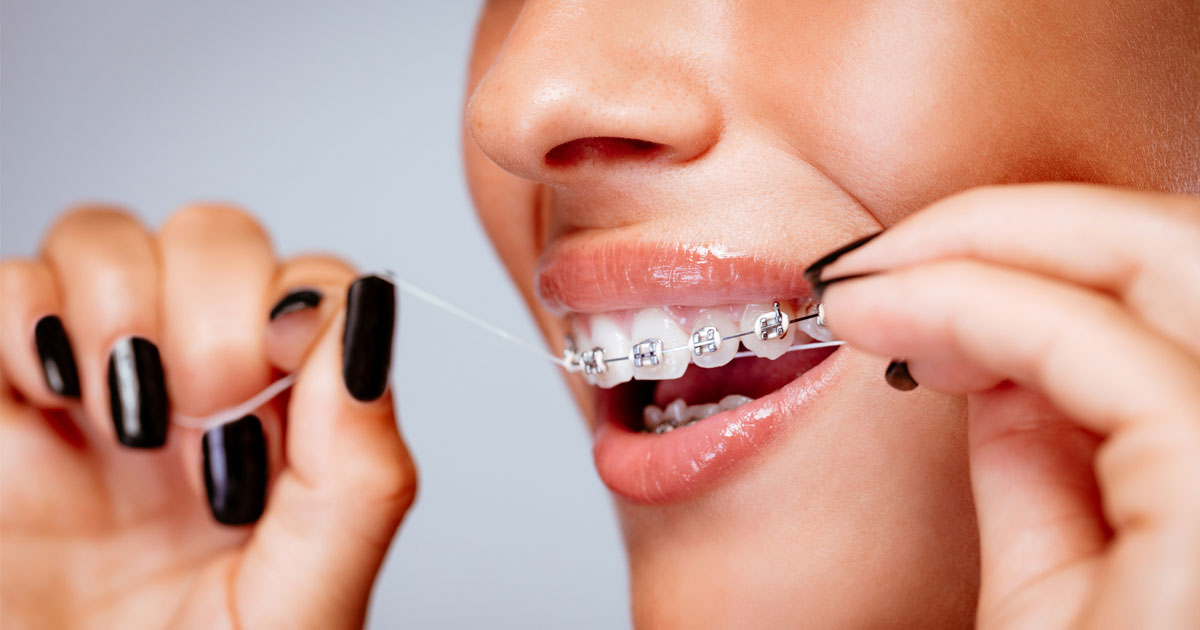Flossing with braces can be tricky, but with a few tips, you’ll have your pearly whites sparkling in no time. Taking care of your teeth is one of the most important parts of staying healthy. In many cases, regardless of your age, there may come a time when you need braces to ensure proper oral health. Braces can not only realign your teeth for a better smile, but they also help your bite and promote better oral health.
While you’re wearing your braces, it’s more important than ever before that you do the best you can to help your teeth stay healthy. That means proper brushing and flossing, just as it does for those who are not wearing braces.
A Note About Braces and Oral Health
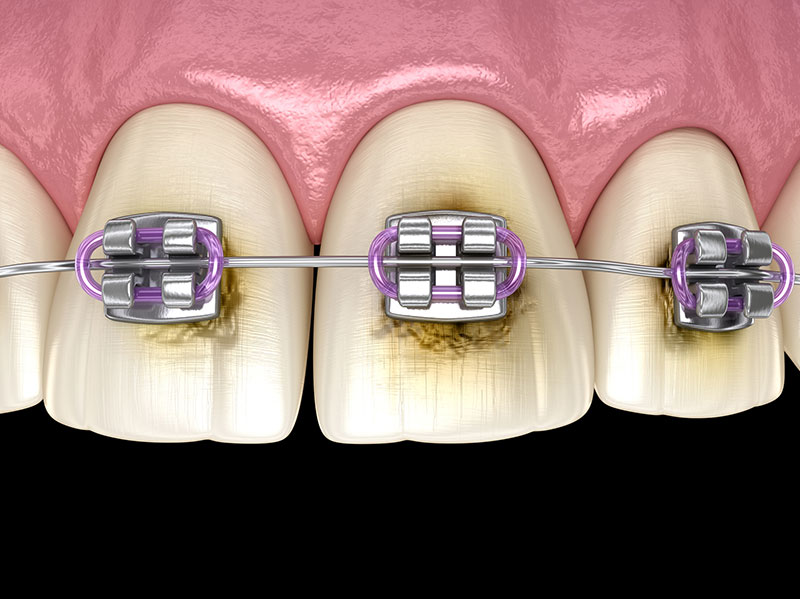
When your teeth are misaligned, it’s hard to clean them properly, which can allow plaque to build up in places where your teeth overlap. Plaque can lead to tooth decay, which can result in cavities or even the need to remove and replace teeth. Plaque near the gums contributes to gingivitis, which is just the early stages of full-blown gum disease.
When gingivitis becomes gum disease, gums bleed more easily and can even start to recede, which may eventually lead to tooth loss. Periodontitis treatment cannot be effective without properly cleaned teeth. Often, a deeper cleaning must be performed to get to any of the deposits of plaque and tartar that may be left below the line of the gums.
Braces can realign the teeth, eliminating some tough-to-clean spots and helping you reach others. In this way, braces can help you prevent the damage that can happen with poor oral hygiene. Still, you’ll need to ensure that you are caring for your braces and your teeth properly, as braces can pose temporary oral hygiene issues of their own.
Flossing With Braces is Incredibly Important
While flossing is important for all people, flossing is crucial for those with braces. Braces provide extra spaces for food and plaque to gather and make contact with your teeth. Many of these spaces aren’t reachable with a toothbrush – no matter how hard you might work at it, brushing can’t possibly reach all the tight crevices in the mouth. As a result, flossing with braces is a must.
Removing food and plaque lodged in and around braces and teeth is essential for reasons beyond preventing plaque buildup, cavities, and gum disease. It also helps prevent deep staining from food and helps to keep teeth from yellowing. In addition, flossing also prevents the ravages of bad breath.
What Flossers Work Best for Braces?
Keeping your teeth clean with braces may require different tools than your average spool of dental floss. Here are five important tools you can use to floss your teeth during your braces treatment:
Waterpik Flosser
Waterpiks have been used by dentists and orthodontists for years. Water flossers employ a jet of pressurized water precisely where you need it to dislodge food and plaque. These can be used in conjunction with traditional flossing for cleaner teeth and braces. Water flossers can blast away all the built-up plaque and any sugars left behind from food or drink.
Using a water flosser is fairly simple. Just fill the storage tank with water, make sure you’re leaning over a sink, and lightly close your mouth around the device. Turn on the water flosser at a lower pressure, and then start at your gum line and move to your brackets. Do this with each tooth, increasing the pressure if needed.
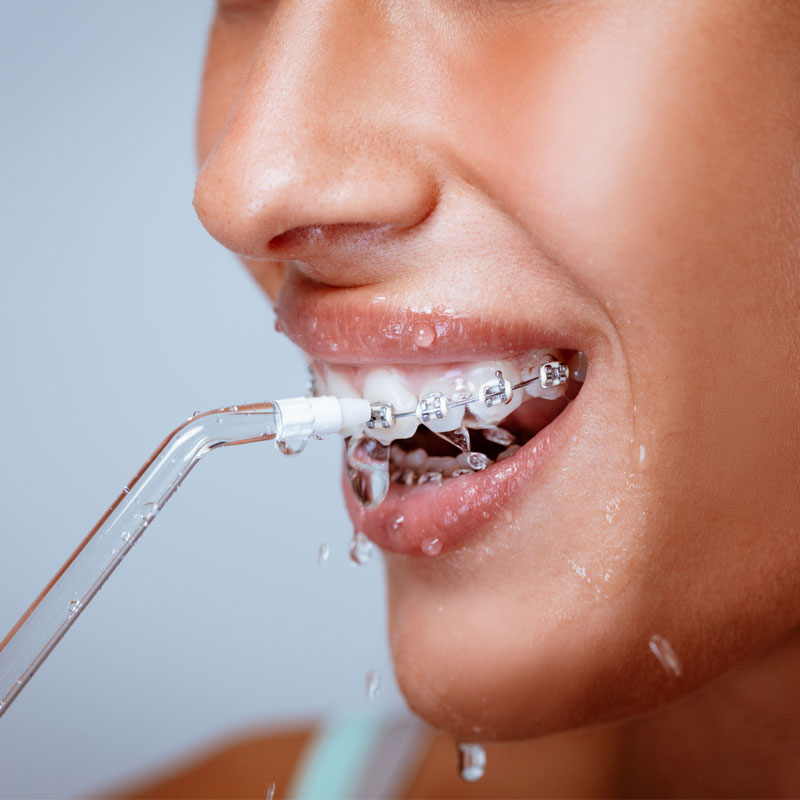
Orthodontic Flosser
This item is a handy tool that makes flossing with braces significantly easier. It is a double-armed flexible plastic tool that holds the floss taut between its arms, allowing the floss to easily get behind the wires and thoroughly clean your teeth. It eliminates the annoyance of traditional flossing and the need to wind the floss around your fingers to create tension. While many brands of orthodontic flossers aren’t the most environmentally friendly, as they’re single-use, some are reusable.
Traditional Dental Floss
Traditional dental floss can be a great tool if you learn a few tricks to floss effectively with braces and keep some key tips in mind. If you hadn’t formed the habit of flossing every day before having braces installed, it’s important to start flossing after each meal now that there are additional crevices for food and plaque to become lodged. That’s why now is a great time to get into the habit of regular flossing.
For those who wear braces, we recommend finding floss that is waxed, as it has less of a tendency to shred during use. There are a plethora of brands and styles, so you might need to do a little testing until you find the best one for your needs. As mentioned, you can pair traditional floss with one of the alternative flossers above for optimal oral hygiene.
Dental Floss with Threader
It can be tricky to get the hang of flossing with braces. A dental floss threader can be a huge help in this circumstance. This tool is a thin, small tool made of plastic. One end has a plastic loop you can thread with your dental floss. Using the handle side of the threader, slide it between your teeth and the wire. Then, make sure the flosser goes all the way back through the space so you can floss your teeth all the way to the gum line. Once you get the hang of this tool, the process is less complicated and will start to go smoothly.
Interdental Brushes
Though these tools aren’t exactly flossers, they’re another option that can be used to keep your teeth clean while you’re wearing braces. Interdental brushes differ from traditional toothbrushes in that they have tiny bristles that fit nicely between wires to remove food and plaque. We advise against using interdental brushes in conjunction with toothpaste because the combination can be too harsh.
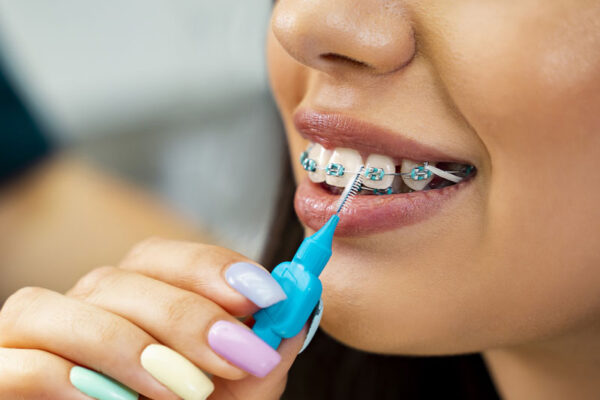
Pros and Cons of Each Variety of Flosser
If one of the above tools isn’t standing out to you as a simple tool to help you keep your teeth and braces clean, it may be time to consider their pros and cons. Not every tool is right for everyone, and it’s important to understand the pros and cons so you know what method might work best for you and your braces.
Waterpik or Water Flosser Pros and Cons
The benefits of using a water flosser obviously include not needing to use floss, but there are many more. You’ll be able to work around your brace wires, it’s easy to find these tools at any drugstore, and they’re reusable, making their higher initial price point much more reasonable. Incorporating a water flosser into your normal dental hygiene routine may also help you begin diminishing plaque by nearly 75%.
The major con of the water flosser is its price point. As mentioned, however, they’re reusable and relatively durable, meaning this is a purchase you’ll only need to make once every several years. Additionally, while there are travel versions of the water flosser, you’ll still need access to water or a sink to refill, as well as a place to spit.
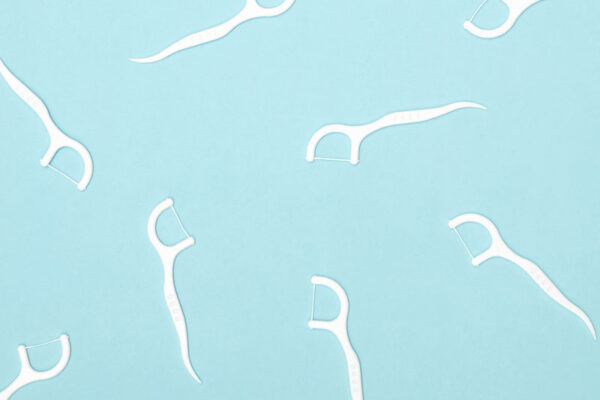
Orthodontic Flosser Pros and Cons
The main advantage of orthodontic flossers is that these tools are quick and easy to use. On top of that, you don’t have to thread the floss on your own. For children or people who have a difficult time with dexterity, these are an excellent choice.
Sometimes, these are slightly more costly than other options, and they can be difficult to locate in stores. Their placement can sometimes be with the rest of the dental hygiene items, or they may be located with specialty oral health items.
Traditional Dental Floss Pros and Cons
Most people know how to use dental floss, and a brief tutorial is easily obtainable at your dentist or orthodontist appointments. Dental floss is also easy to find and extremely inexpensive. There are also several floss options, so if one doesn’t work out for you, you’ll have other choices.
The major con of dental floss is that it is probably the most time-consuming way to floss with braces. There is also a bit of a learning curve to learning how to floss after you begin braces treatment. Just like with orthodontic flossers, regular dental floss isn’t reusable.
Dental Floss with Threader Pros and Cons
Threaders are a great option for a few reasons. First of all, they’re fairly inexpensive, and sometimes you’ll even score some for free from your dentist or orthodontist. These are also reusable, which is handy, inexpensive, and environmentally friendly.
Unfortunately, there’s a bit of a learning curve here, and those who get easily frustrated might want to choose another option. Using a threader is the most time-consuming choice because it requires threading the tool before you can begin flossing. While it gets quicker with practice, it will still take the most time of any of the above options.
Interdental Brushes Pros and Cons
Interdental brushes have a few pros, particularly that they are available in different size options to fit your needs. In addition, they can be used for nearly a month before you’ll need to replace them. Floss can sometimes be a little harsher on sensitive gums than interdental brushes, so these are a great option for those with sensitive gums.
What Kind of Floss for Braces Is Recommended?
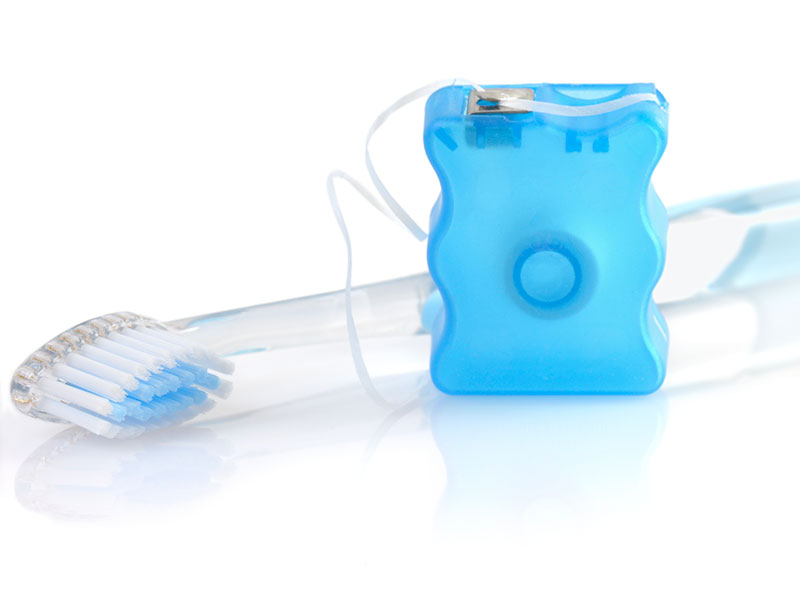
While both multi-strand floss and monofilament options will get the job done, we typically recommend the monofilament option for its reduced risk of catching on braces. Monofilament options are also easier to use. The mult-istrand options have the tendency to pull apart and snag on the sharper parts of the braces.
How Often Should You Floss with Braces?
Flossing is an important part of any proper dental hygiene plan. While it’s best to floss after each meal or twice daily, just as we recommend for those without braces, you should floss a minimum of once per day. Flossing helps to eliminate trapped food and plaque and prevent it from affecting your teeth and gums.
In addition to regular flossing, it is important to brush after eating and brush once in the evening with an interdental brush. Braces can readily trap food particles and cause damage to your braces and teeth. Brushing and flossing regularly can help you prevent gingivitis, cavities, and more, ensuring your teeth remain healthy. When your braces are removed, you’ll be ready with a healthy, sparkling smile.
Make Sure Your Braces Work for You
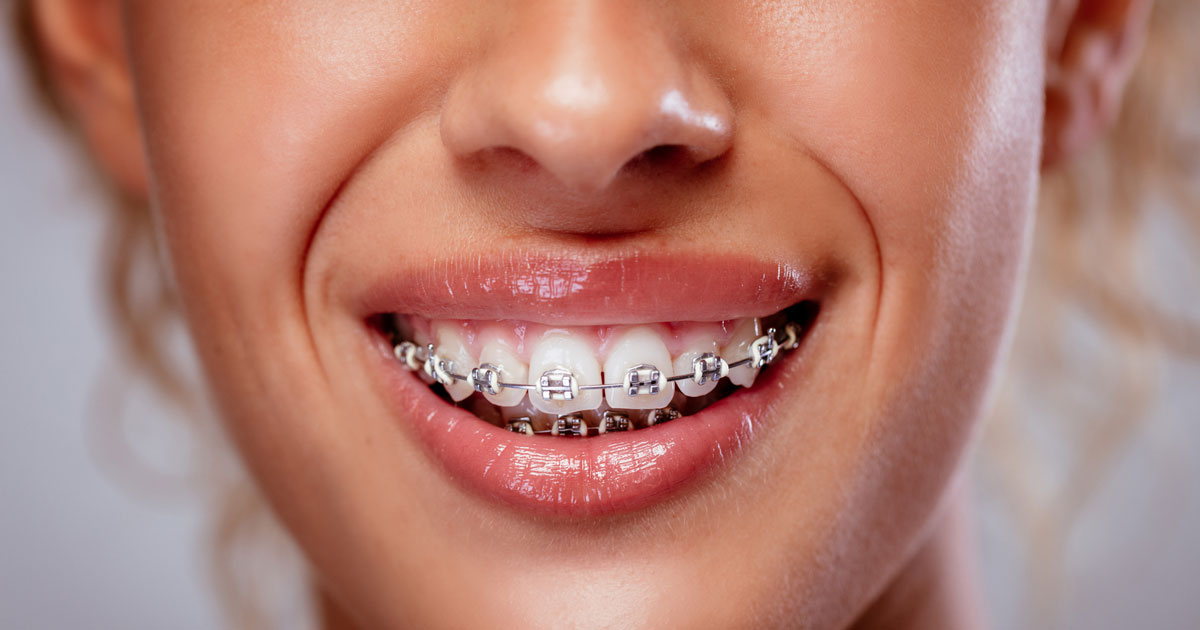
Your teeth are important to your overall health, and here at Robison Orthodontics, it’s important that each of our patients learns as much as possible about caring for their teeth – both with and without braces.
We know how stressful it can be to get used to new, healthy habits, which is why our friendly office staff are here to help you every step of the way. Follow the suggestions above to establish a brushing and flossing routine for your braces, adhere to our care instructions, and leave the rest to us. Contact us about concerns or to make an appointment regarding orthodontics in Glibert, AZ.
Resources :

Dr. Tyler Robison is an alum of Mesa’s Mountain View High School. He graduated from Brigham Young University before being accepted to the “Top Ten-nationally ranked” University of Louisville in Kentucky, where he earned his Doctorate in Dental Medicine and a Master’s Degree in Oral Biology. He graduated with honors in the top ten percent of his class. Dr. Robison continued at the University of the Pacific in San Francisco, where he received a second master’s degree in dental science and his orthodontic certification.

